
The Sport and its Founders
In 1983, Howard Schwartz, a young television producer from Miami, Florida who had moved to Los Angeles, had an intuition that would change the face of American fitness forever.
Howard’s background included producing live entertainment and dance auditions for Dance Fever, a popular TV dance show in America, that starred Deney Terrio, credited for teaching John Travolta and Michael Jackson the dance steps that brought them fame.
During this time, aerobic dance was becoming popular in the USA and worldwide. After visiting aerobic studios around LA and witnessing the popularity and athleticism of their instructors he decided to create a competition around aerobic dance.
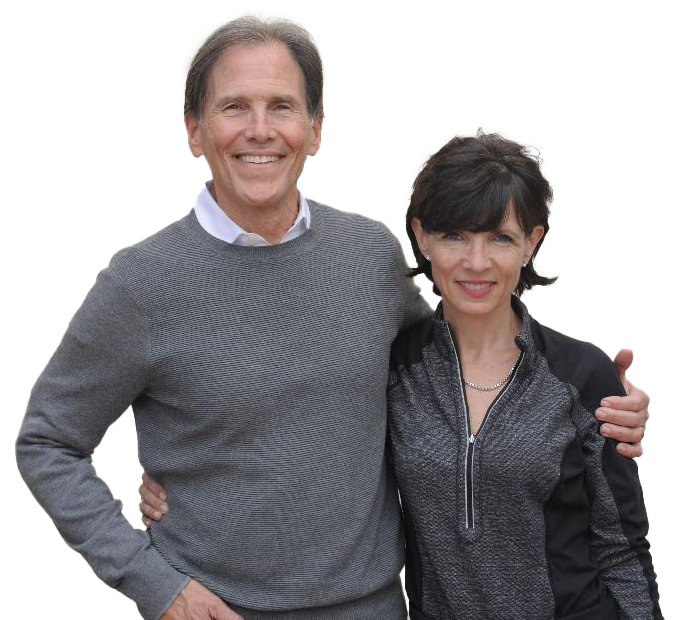
One Saturday afternoon he stopped out of curiosity to watch an event at a small underground aerobic studio in Westwood, California.
There, he witnessed an aerobics competition, with the winner earning the chance to teach aerobics in Japan a few months later. Captivated by the audience’s passion and the intense competition, Howard asked who was behind organizing the event. That’s when he met Karen Silten.
From that chance encounter came a groundbreaking partnership and a competition to find America’s best aerobics instructor. The concept was to develop aerobics from an exercise form into a viable sport that would provide aerobics instructors and athletes a platform to be recognized for their skill and accomplishment.
After all, it was the 1980s: fitness was at its peak, gyms were crowded with aerobics enthusiasts, and the market responded positively to anything related to wellness, health, and the fitness world. And so, “competitive aerobics” was born. Howard and Karen, who became professional partners and later husband and wife, had just “invented” a new sport.
At this time in fitness history, two major industry associations regulated the fitness world, offering instructors theoretical knowledge and practical updating opportunities: IDEA (International Dance Exercise Association) and AFAA (American Fitness and Aerobic Association). Howard and Karen involved both to develop a set of rules that respected the physiological principles of movements and allowed athletes to compete safely. Thus, were born the four mandatory elements that would remain pillars of the competitions for many years: jumping jacks, push-ups, abdominal curls, and high leg kicks.
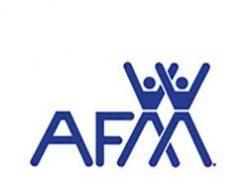

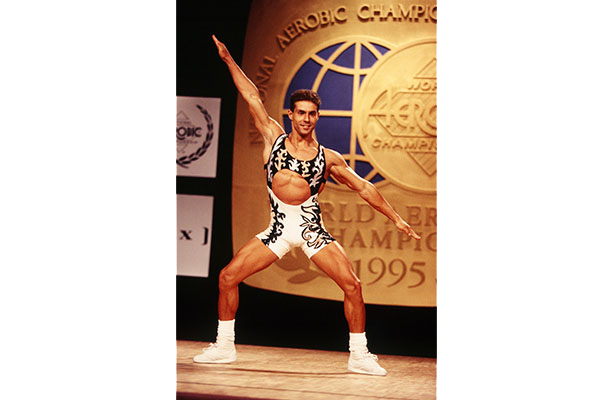
Jumping Jacks
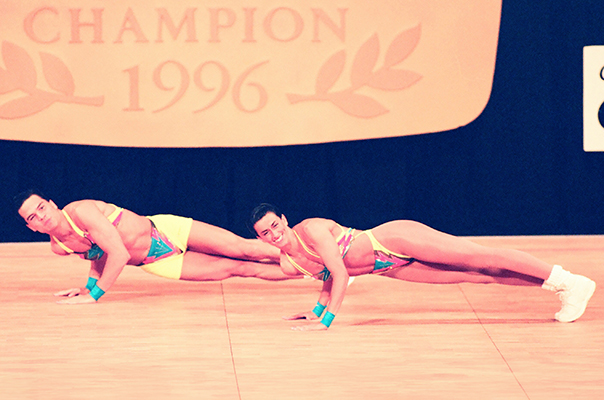
Push-ups
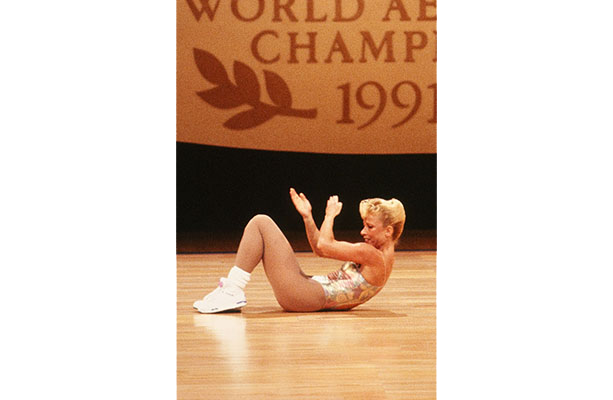
Abdominal Curls
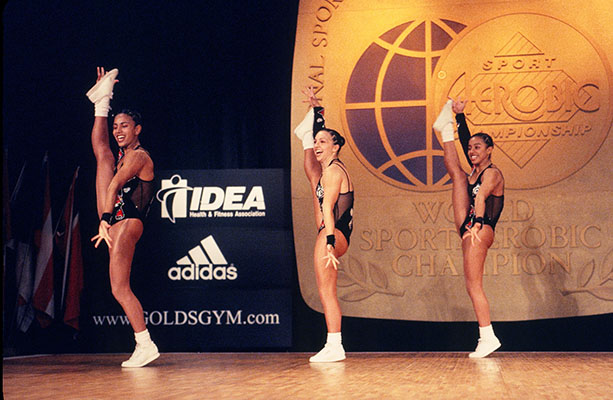
High Leg Kicks
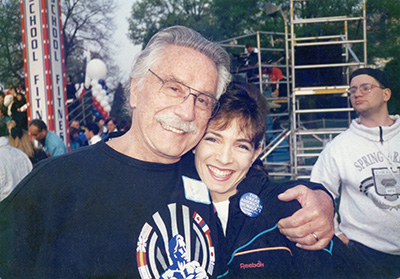
The first competitions they organized, in 1984, captured national attention thanks to the support of Evian Water, a water brand that had recently entered the USA market, and Shape, a fitness magazine that had just been established by Weider Publications, who also published the successful Muscle & Fitness magazine.
The success of the then-named Evian Great Shape National Aerobic Competition was immediate and overwhelming throughout America, much of it was due to the original concept of holding qualifying rounds in large and crowded shopping malls, which gave immediate visibility to both the sponsoring brands and the event itself. The competition was hosted by Bess Motta, who appeared in the Canadian produced television series “20 Minute Workout”.
Following its enormous success in its first year, a larger sponsor was found in Crystal Light, a low-calorie power drink launched by General Foods Corp.
From its inception, competitive aerobics captured the attention and earned the respect of athletes who were drawn to it by the challenge and excitement of its high-performance standard. Competitive aerobics was created as a showcase for athletes of all ages to demonstrate excellence in the fitness components of muscular strength and endurance, cardiovascular fitness, flexibility, coordination, and artistic performance skills. It was the way for participants and instructors alike to test their abilities in head-to-head athletic competition.
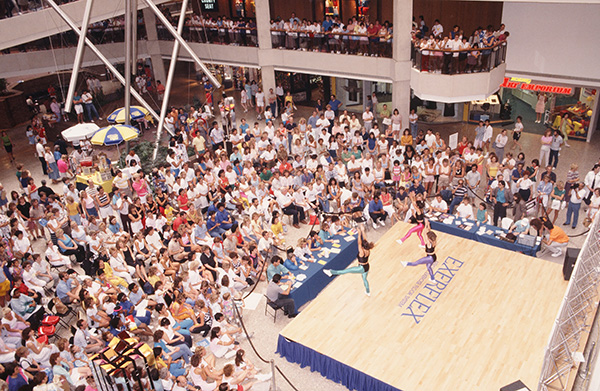
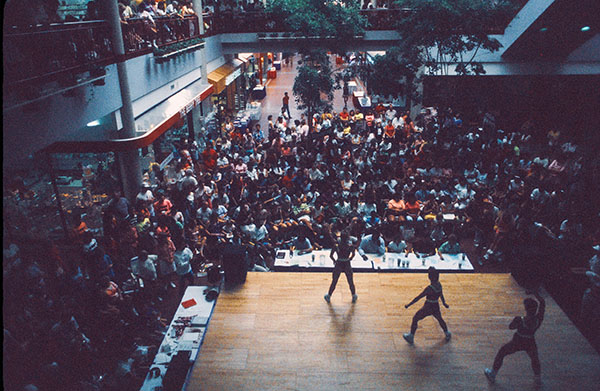
The Crystal Light National Aerobic Championship (later renamed when Reebok took over as the new title sponsor) quickly became a cultural phenomenon. Participants could compete in one of 10 regional competitions throughout the U.S., specifically designated to their state location, in one or more category, and/or the U.S. Open Competition (open to participants throughout the entire country.)
Due to Howard and Karen’s insight that the event needed immediate television and media coverage to ride the fitness wave, they found a relationship with Metromedia Syndication to broadcast the first three years of the Championship on major television networks across America.
The exposure TV created made the Crystal Light National Aerobic Champions true celebrities in fitness – appearing in TV commercials, newspapers, and magazine articles, teaching aerobics classes, and touring across the USA at regional competitions and live performances.
But the impact of the NAC didn’t stop at American borders. News of the championship was growing internationally, and TV coverage was expanding.
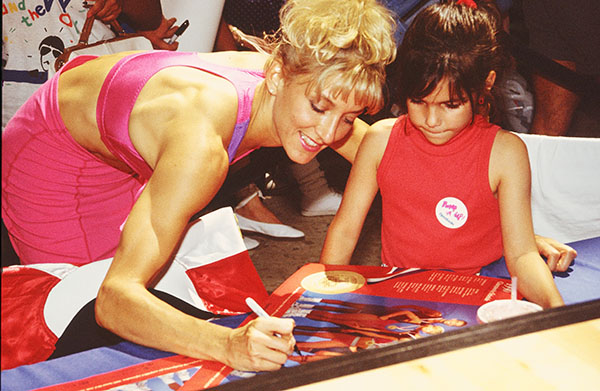
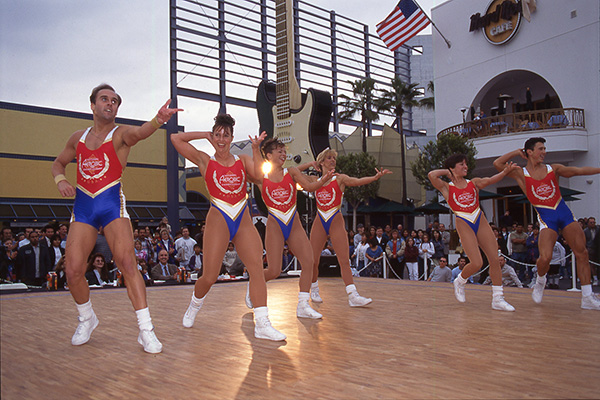
IDEA and AFAA organized huge Expos that combined training events with the sale of fitness items, clothing, and equipment, and they attracted enthusiasts from all over the world, who began to take interest in competitive aerobics and asked to import the National Aerobic Championship into their countries.
Through exclusive affiliations they negotiated with international event producers worldwide with similar ambitions, Howard and Karen grew the NAC, spreading the know-how and competition rules, and offering the opportunity to have American national champions as judges and performers to launch the championship in their countries.
The fame of the NAC circuit expanded first into Canada, Japan, Brazil, the UK, and several additional countries when the Schwartz and the US National Aerobic Champions were invited to the former Soviet Union to introduce aerobics and fitness to the population and help form their first National team of aerobic athletes (you can find more details about this wonderful adventure in the “Special Content” section of this site). This was to continue for three visits.
Following the Championship’s inaugural syndicated on television, the Schwartz’s entered an agreement with ESPN/Eurosport to continue broadcasting the USA and World Aerobic Championship for 10 more years, reaching over 23 million Americans, and many more viewers worldwide.
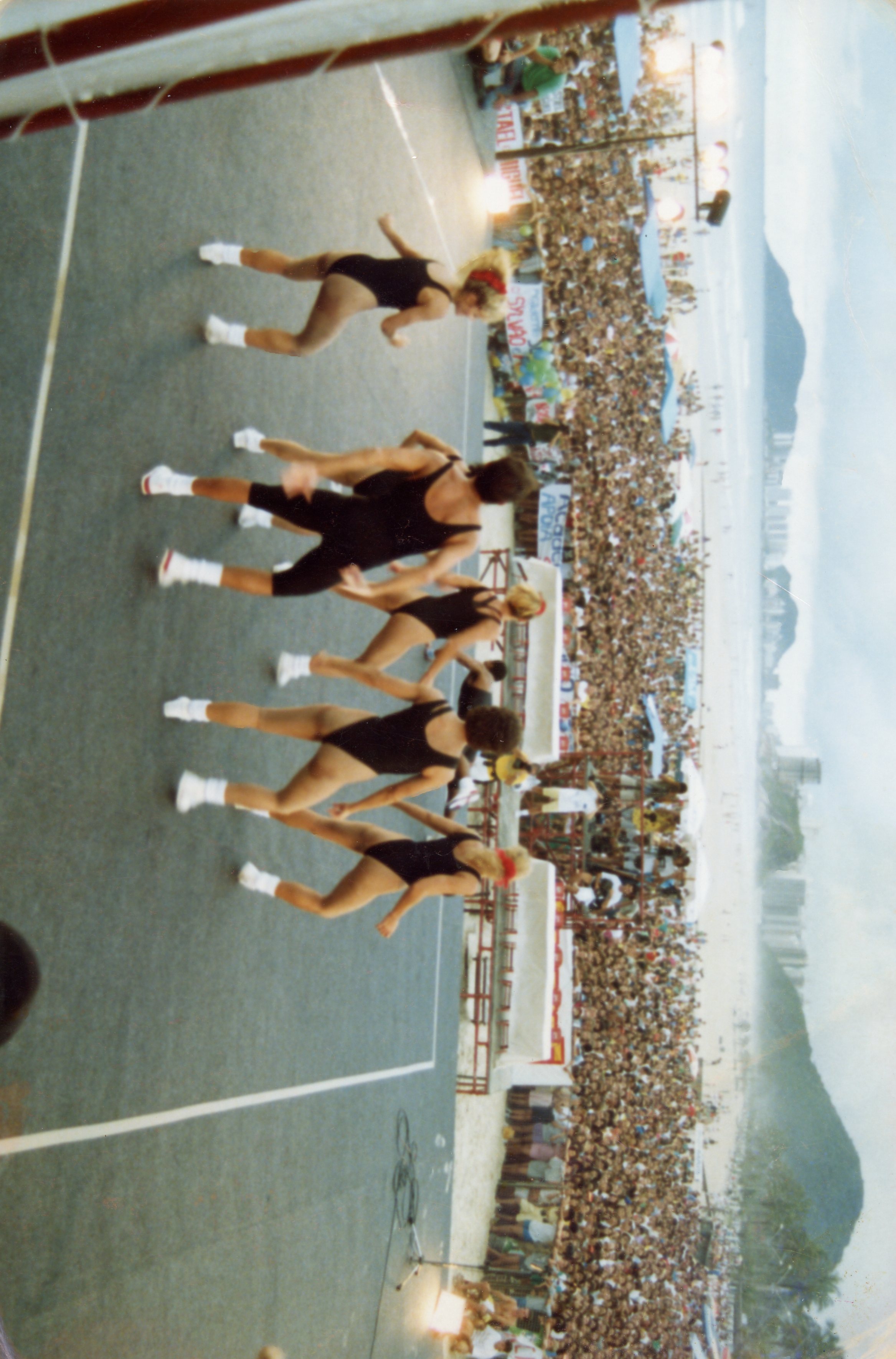
The success was such that in 1990 the first World Aerobic Championship was launched in San Diego, California, with 16 participating Nations. The number of involved nations steadily grew with the World Aerobic Championship finals presented in halls and arenas crowded with thousands of people. Winning the NAC World Aerobic Championship opened the door to professional success in health and fitness for many participating athletes around the World.
Not limiting themselves to the television medium, Howard and Karen Schwartz also co-produced with Karl/Lorimar the “National Aerobic Championship Workout” home video series, which achieved platinum status in the first month of release.
Today, thousands of athletes worldwide compete in Aerobic Gymnastics, inspired by the vision of this couple who, forty years ago, turned an idea born in a shopping mall into a global reality.
But the Schwartz’s success story did not end there. In 2002, they had another brilliant insight.
While traveling globally, Howard and Karen saw break dancers and hip-hop crews on the streets of Tokyo, Paris, and New York.
Hip-hop culture had spread widely, with its music becoming mainstream, and hip-hop and street dance evolving worldwide. Even Health clubs and gyms began adding the latest in hip-hop choreography to their fitness class schedules.
So why not launch the World Hip Hop Dance Championship?
Their experience in building aerobic dance from an idea to a recognized sport could work similarly in taking street dance from its underground roots to the mainstream.
The success was immediate, and today their Hip Hop International Dance Championship circuit is recognized as the most prestigious competition in the world.
Shortly after that, Howard and Karen also produced the show “America’s Best Dance Crew,” which became a cultural phenomenon and was seen worldwide thanks to airing on MTV, MuchMusic, Warner Channel, and other broadcasters, eventually winning an Emmy Award in 2016.






















